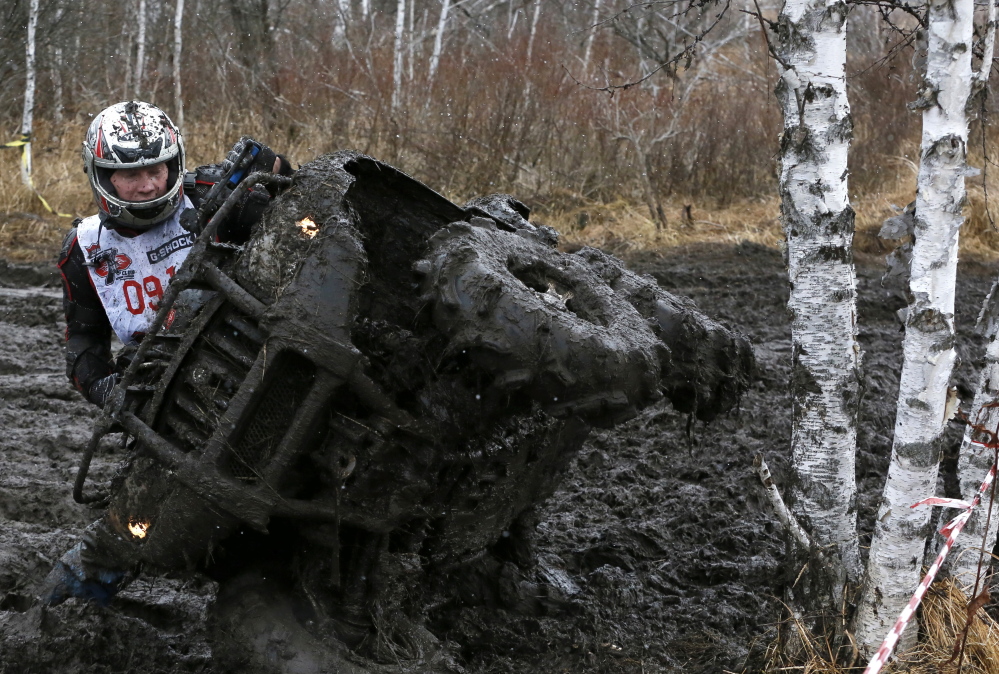LOS ANGELES — Rebuffing off-road vehicle manufacturers, the U.S. Consumer Product Safety Commission voted Wednesday to move forward with rules aimed at preventing rollover crashes, which have killed hundreds of riders.
The rules would include minimum standards for the handling and stability of the popular trail machines known as recreational off-highway vehicles, of which an estimated 1.2 million are in use. The vehicles also would be engineered to limit their speeds to 15 mph when seat belts aren’t fastened.
The proposed rules will now go out for public comment. It will be at least several months before they could become a final regulation.
A dozen U.S. senators had joined a trade group, the Recreational Off-Highway Vehicle Association, in urging the commission to delay voting on the rules and continue long-running talks with the industry on upgrading its voluntary standard. Among them were both Missouri senators, Republican Roy Blunt and Democrat Claire McCaskill; Sen. Ted Cruz, R-Texas; and Sen. Marco Rubio, R-Fla.
But in a 3-2 vote, commissioners rejected the call to stall a rule-making process that’s already taken five years. The majority argued that the prospect of a federal mandate would motivate the industry to strengthen its voluntary standards.
Paul Vitrano, a vice president at Polaris Industries, the top ROV manufacturer, said the company was “very disappointed” by the vote. “We also expect that thousands of our dealers and hundreds of thousands of our customers will be expressing their concerns,” he said.
Rachel Weintraub, senior counsel for the Consumer Federation of America, called the vote a “very good decision for consumers,” after years of what she said was the industry’s refusal to act.
The commission’s three Democrats – Robert S. Adler, Marietta S. Robinson and Chairman Elliot F. Kaye – voted to issue the proposal, and the two Republicans, Ann Marie Buerkle and Joseph Mohorovic, voted against that.
The agency says it’s aware of 335 ROV-related deaths through April 2013 and it’s estimated that ROV accidents result in 11,100 medically treated injuries per year. In a typical severe accident scenario, the ROV flips while in a turn, the occupants are fully or partly ejected, and then suffer critical injuries when the vehicle, often weighing 1,100 pounds, lands on top of them.
The commission staff began work on the proposal in 2009. Besides setting performance standards, the rules would allow shoppers to compare the rollover risks of competing models through stability ratings printed on hang tags with each vehicle.
Industry officials say the current voluntary standard is adequate, that ROVs are reasonably safe and that injuries result from drivers doing risky stunts or failing to heed warnings to wear helmets or use seat belts.
FairWarning is a Los Angeles-based news organization focused on public health, safety and environmental issues. This story was distributed by Tribune News Service.
Send questions/comments to the editors.



Success. Please wait for the page to reload. If the page does not reload within 5 seconds, please refresh the page.
Enter your email and password to access comments.
Hi, to comment on stories you must . This profile is in addition to your subscription and website login.
Already have a commenting profile? .
Invalid username/password.
Please check your email to confirm and complete your registration.
Only subscribers are eligible to post comments. Please subscribe or login first for digital access. Here’s why.
Use the form below to reset your password. When you've submitted your account email, we will send an email with a reset code.